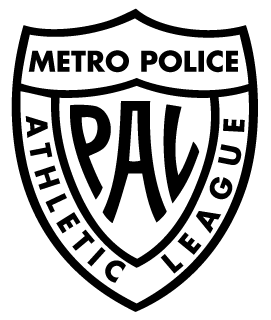Thank you for the opportunity to present to you today the story of PAL, the background and the reasoning behind the Police Athletic League. So that you may fully understand the program and the potential benefits it can provide in your ongoing battle against juvenile crime, we would like first to present a brief history of the Police Athletic League - when, how and why it came to be. We'll follow with additional information on the National PAL, the national headquarters operation which serves to unite and work on behalf of PAL chapters throughout the country. Then we'll touch on the scope of PAL activities as well as some of the unique aspects and benefits of the program. We'll conclude with a brief outline of some of the initial steps to be taken to establish a PAL chapter in your community.
PAL started with a bang - a rock through a window. A gang of New York toughs, harassing storekeepers and generally making life miserable in their neighborhood, threw the rock that eventually pioneered this new approach to the problem of juvenile delinquency. Lt. Ed W. Flynn, of the Police Department Crime Prevention Bureau, was on duty that fateful day. To him it was another day of kids getting in trouble.
But it was more than that. Lt. Flynn liked kids. He wondered at the uselessness of always punishing them. He wondered why they couldn't be reached before they were in trouble. That day, he made it a point to search out the gang's ringleader. They talked. Lt. Flynn looking for the reasons behind the kids' antisocial behavior. The ringleader pouring out the frustrations of the ghetto - telling the cop, "Man, we ain't got no place to play...nothin' to do: The cops are always hasslin' us. We can't even play baseball."
Lt. Ed Flynn thought about that. A staunch baseball fan himself, he began to wonder-"Why should the police chase kids for doing what was normal. Why not help those kids form a team? Give them a place to play under police supervision. Be a friend instead of an enemy." He talked it over with some of his fellow officers and some of the neighborhood shopkeepers. They liked the idea. And each of them chipped in a dollar for equipment and uniforms.
Lt. Flynn found a playground where the group could play under the eye of friendly policemen. The team was an instant success. Before the year was out, there were close to a dozen such teams in the city. In 1937, PAL dedicated its first indoor youth center and in 1941, it became incorporated under the laws of the state of New York.
That was the birth of PAL. Beginning with athletics, it has since broadened its scope to include arts and crafts, dance, music, drama, social services, vocational guidance, remedial reading, gardening, field trips - and virtually any good healthy activity that kids are fond of. There now exists a State of New Mexico PAL and National PAL organization, they are called the New Mexico Police Athletic League and the National Association of Police Athletic Leagues, Inc. (National PAL).
